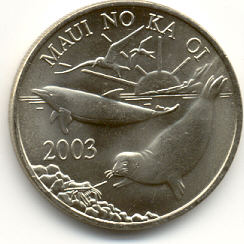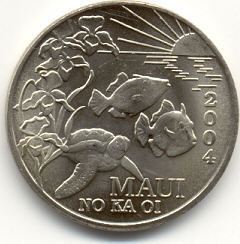 |
 |
| Hawaii |
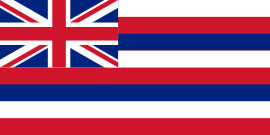 |
|
|
The Hawaiian Islands, once
known as the Sandwich Islands, form an archipelago of nineteen islands and
atolls, numerous smaller islets, and undersea seamounts trending northwest
by southeast in the North Pacific Ocean between latitudes 19° N and 29° N.
The archipelago takes its name from the largest island in the group and
extends some 1500 miles (2400 km) from the Island of Hawai‘i in the south to
northernmost Kure Atoll. Politically, they form the U.S. 50th State called
Hawaii. This archipelago represents the exposed peaks of a great undersea
mountain range known as the Hawaiian-Emperor seamount chain, formed by
volcanic activity over a hotspot in the earth's mantle. At about 3,000 km
(1,860 miles) from the nearest continent, the Hawaiian Island archipelago is
the most isolated grouping of islands on Earth (Macdonald, Abbott, and
Peterson, 1984). |
|
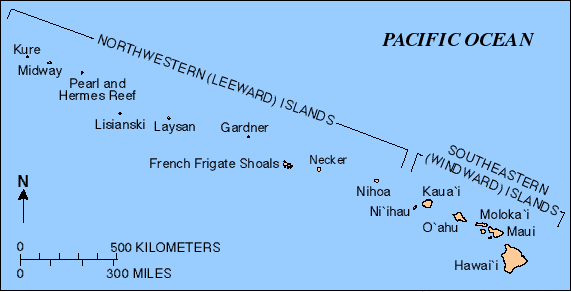 |
|
|
A total of 132 islands and atolls comprise the Hawaiian Islands, with a total land area of 16,636 km2 (6,423.4 square miles). The eight main Hawaiian islands (all inhabited except for Kaho‘olawe) are, listed here from south to north: Hawai‘i (also known as the Big Island) Maui Kaho‘olawe (uninhabited; temporary residential facilities) Lāna‘i Moloka‘i O‘ahu Kaua‘i Ni‘ihau Smaller islands, atolls, and
reefs (beyond Ni‘ihau and all uninhabited); called the Northwestern Hawaiian
Islands: Except for Midway, which is
an unincorporated territory of the United States, these islands and islets
are administered as the State of Hawaii — the 50th state of the United
States of America |
|
| Hawaii's main islands and/or kingdoms are namely Hawaii, Hilo, Honolulu, Kauai and Maui. Each of these five islands have issued commemorative coin on their kings, queens historical and famous places. Each coin has a domination value of 1 Dollar with 38.5mm diameter. These coins are considered as souvenirs. I purchased this set of coins in Brass from Hallenbeck Coin Gallery / Kristy (Kristy@myfavoritecoinstore.com). | |
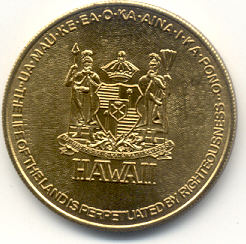 |
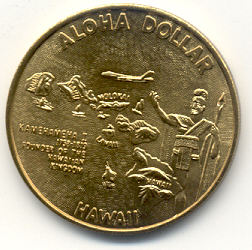 |
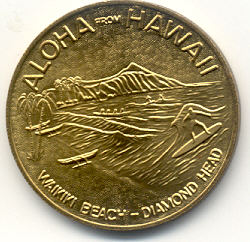 |
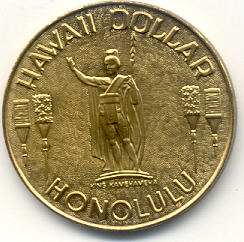 |
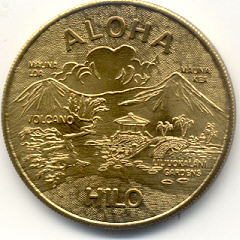 |
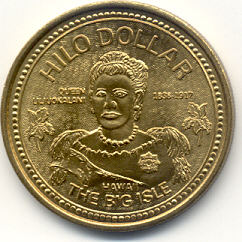 |
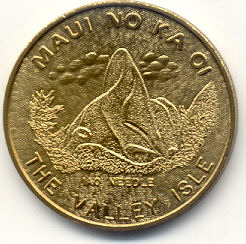 |
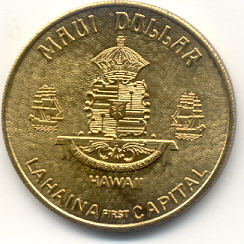 |
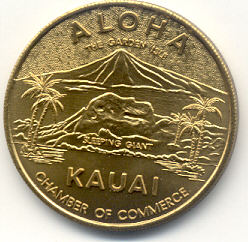 |
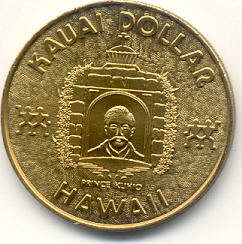 |
| Maui, known as the Valley Isle, is the second largest of the Hawaiian Islands. Its gorgeous scenery, beautiful tropical beaches and numerous cultural activities, has long made it a popular destination with tourists. Each year, the Maui Chamber of Commerce issues a trade dollar. The 39mm copper-nickel token is good for one dollar at participating merchants throughout the island during the year it is issued. Most of the dollars are kept by tourists as souvenirs rather than being redeemed, which raises funds for educational projects on the island. Maui have produced these trade dollar coin from 1992 to date with different design each year. I have purchased my Maui 2003 and 2004 silver Trade Dollars from Joel Anderson (www.joelscoins.com). | |
| Each year the Maui, Hawaii Chamber of Commerce issues an attractive 39mm copper-nickel trade dollar. It has a face value of 2 Dollars and can be used at participating merchants throughout the island during the year. The project raises funds for educational programs as most of the trade dollars are kept as souvenirs rather than redeemed. The 2010 issue features the unique and endangered ‘I’iwi bird, also known as the Hawaiian Honeycreeper, along side of a Papaya tree and fruit. The bird’s feathers have long been used on ceremonial Hawaiian capes and helmets. We also have available a few of the 2009 issues which feature a pair of whales and a map of the island. | |
|
|
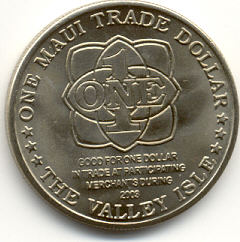 |
|
|
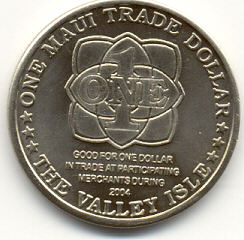 |
| Patrick Mint has also issued 1 cent 1997 coin celebrating the 150th anniversary of Hawaii cent 1847-1997, featuring Kamehameha III. This mint has produce this coin in three different inexpensive metal like aluminum, brass and copper shown at their website: http://www.patrickmint.com/avalus.html | |
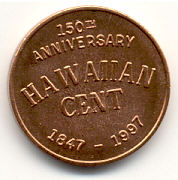 |
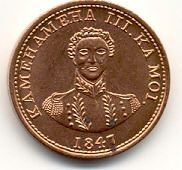 |
| I got my Patrick Mint's Hawaiian cent 1997 copper coin from Oded Paz. | |
| Micro-Nations | |
| Chiefa Coins | |
